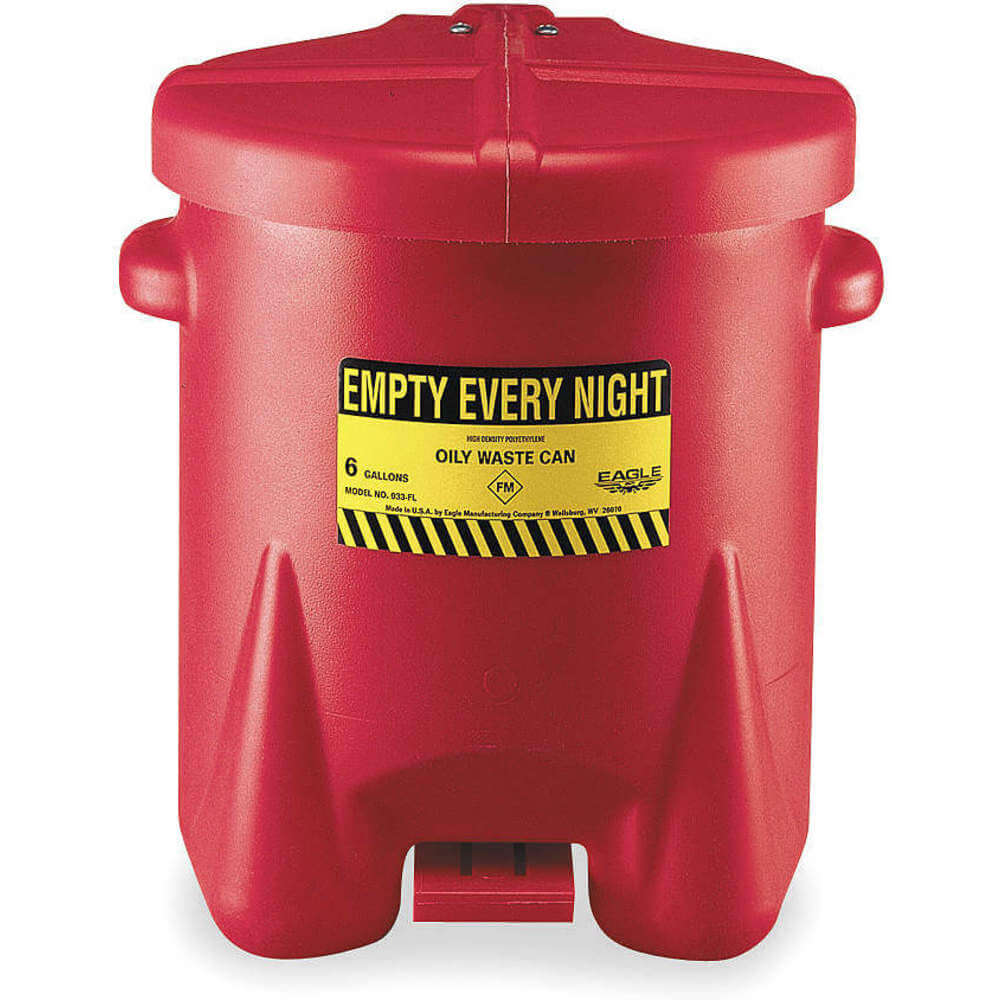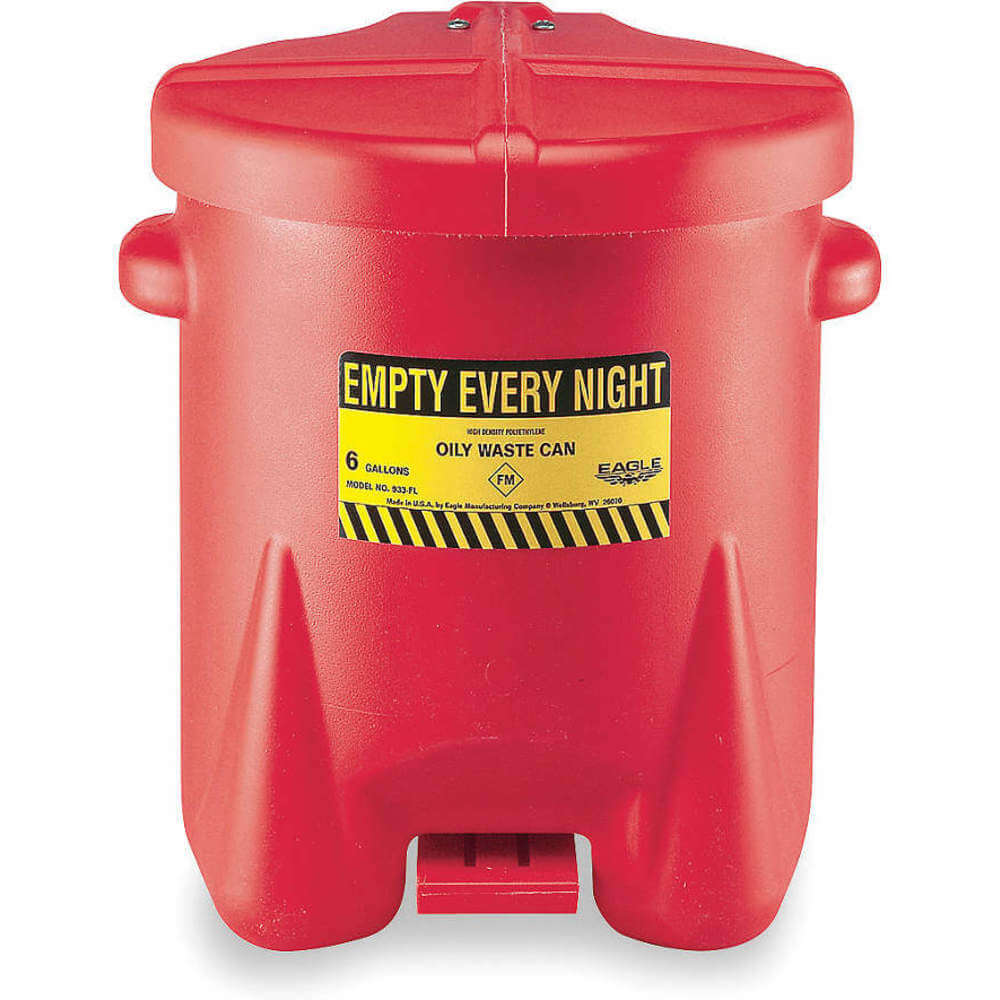Eagle 935-FL oily waste can is used in laboratories and industrial facilities for the safe storage and disposal of corrosive liquids. It ensures compliance with safety regulations and minimises the risk of hazardous substance leaks or spills.
Features:
- It has a self-closing lid with a foot lever to prevent contamination or sudden fire hazards for enhanced environmental safety.
- This waste can features HDPE construction to resist dents and hazardous chemical compounds for durability.
- It further features moulded handles for ease of handling, convenient transportation and manoeuvrability.
- This oily waste comes with a leakproof design and has a flared base for improved can stability to prevent leaks and spills.
Standards and Approvals:
- FM
- OSHA 29 CFR 1910.106
- NFPA Code 30
- OSHA 29 CFR 1910.108
Frequently Asked Questions:
Q. What is the capacity of Eagle 935-FL oily waste can?
A. 10 gallons.
Q. What mounting style does this can allow?
A. This oily safety can allows floor mounting for increased stability.
Q. What type of waste is oily rag?
A. An oily rag is hazardous trash with free-flowing used oil that is highly flammable.
Q. How do I clean and maintain Eagle 935-FL oily waste can?
A.
- Use a mild detergent and water for regular cleaning.
- Avoid abrasive materials that could damage the can's surface.
- Ensure the self-closing lid is functioning properly.
- Regularly inspect for any signs of wear or leakage.
- Store in a covered area away from direct sunlight or extreme temperatures.
Q. What factors should I consider while choosing an oily waste can?
A.
- Size and capacity based on the amount of oily waste produced.
- Material durability for resistance to corrosion and leaks.
- Compliance with relevant safety and environmental regulations.
- Secure lid and design to prevent spills and potential fire hazards.
- Ease of maintenance and cleaning for regular use.
Q. When should I replace this waste can?
A.
- Irreparable damage or significant dents compromising its integrity.
- Malfunctioning or damaged self-closing lid mechanism.
- Persistent leaks or signs of corrosion.
- Wear and tear that impairs its ability to contain waste safely.
- Non-compliance with safety regulations or industry standards.
 Change Country
Change Country






